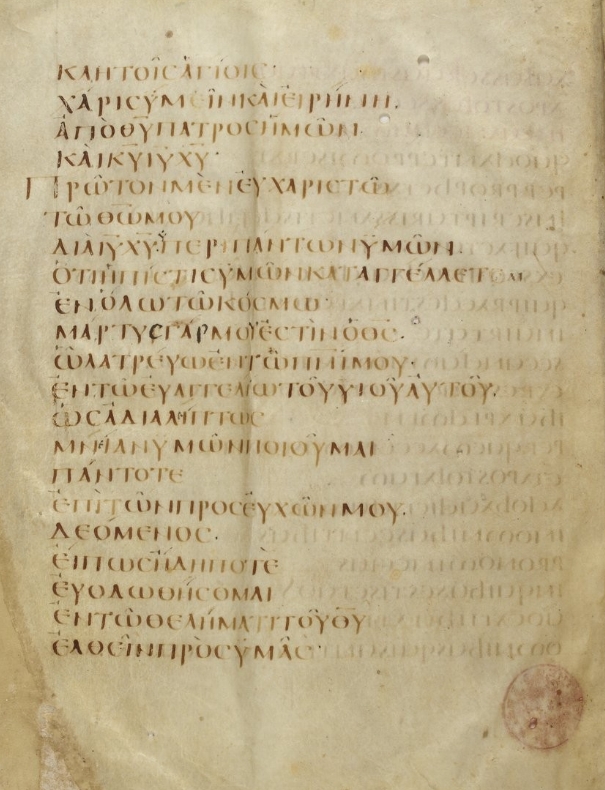Of these I have chosen to analyze by test passage the two Abschriften of
Codex Claromontanus (06), 205 as a copy of 2886, and 821 as a copy of 0141. I chose the
Abschriften of 06, which are 0319 and 0320, because 0319 is the earliest supposed Abschrift
being a ninth-century majuscule copying the fifth-century 06.
p. 51
51
[Claromontanus] renders attention to the copy [Sangermanensis] superfluous.”180 The
previous habit of ignoring a manuscript because it is thought to be a copy of another
manuscript has led to some difficulties. Because 0319 and 0320 have long been considered
copies of 06 they have often been ignored. This is, in fact, a larger problem that faces all
Abschriften: they have been ignored from text critical consideration.
As we will discuss at length in Chapter Four concerning the Abschriften of Codex
53
Claromontanus, there are many instances in that manuscript where a correction mark was
passed on completely into the Abschrift. There is an instance at Titus 3:5 where the first hand
wrote δια. This word was corrected to be omitted by placing small slashes through the letters.
When 0319 came to this word the scribe wrote δια with small slashes through the letters just
as found graphically in its Vorlage. The scribe of 0319 made many of these same blunders
and passed on intended corrections often. Such instances are clear evidence of direct copying.
p. 80
Chapter Four: Codex Claromontanus and the Scribal Habits of its Abschriften



